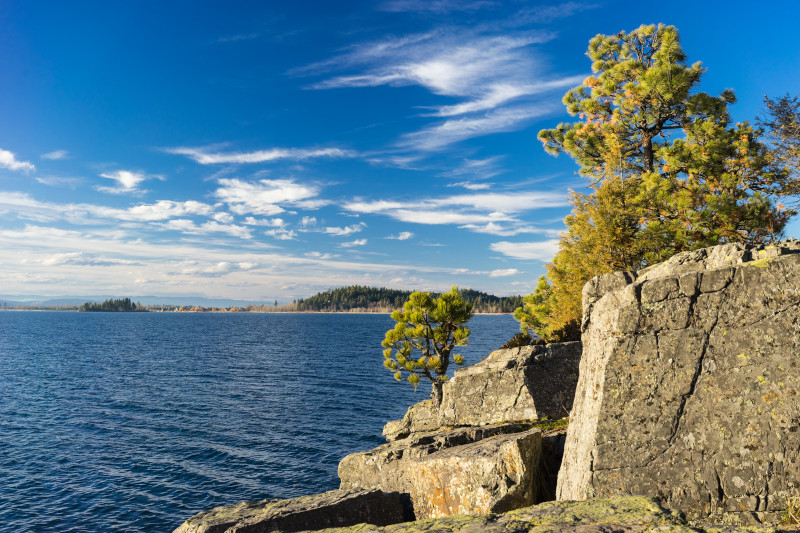
Flathead Lake Facts
- The somewhat unusual term of Flathead Lake currently serves as the most frequently used designation for this marvel of geological processes. For the moment, though, this remarkable formation has no other generally accepted label in the english language by which it’s known.
- The beautiful body of water does have multiple other monikers in different languages, however. In the native tongue of local Indigenous Peoples it holds several, in fact. The Salish People know it as člq̓etkʷ, while the Kutenai refer to the lake by the term yawuʔnik̓ ʔa·kuq̓nuk.
- Regardless of what one chooses to call thhis marvel of geology, though, the lake remains a breathtaking site. Despite the presence of a hydroelectric dam, great care continues to be taken to maintain its state. Due to this, it ranks as one of the cleanest lakes of its size on earth.
- The native inhabitants of the region it appears in long knew of and appreciated its existence, of course. Vague records indicate that the first known outsider to learn of it was the surveyor Peter Fidler. It’s believed that he made the discovery sometime between 1790 – 1797.
- Fortunately, the magnificent Flathead Lake continues to enjoy a comparatively high level of protection from the depredations of man. That’s largely true since various local Native American populations still maintain a relatively high degree of involvement in its protection.
- Since 2015, a coalition consisting of several local tribes purchased and now operate the hydroelectric facility. These groups put extreme quality standards in place. Groups of the same tribes also preserve and protect a special reserve established in 1991 for the majstic Bald Eagle.
Related Articles
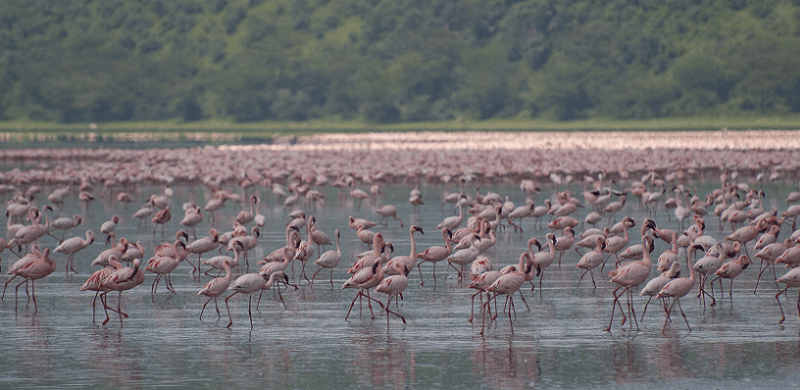
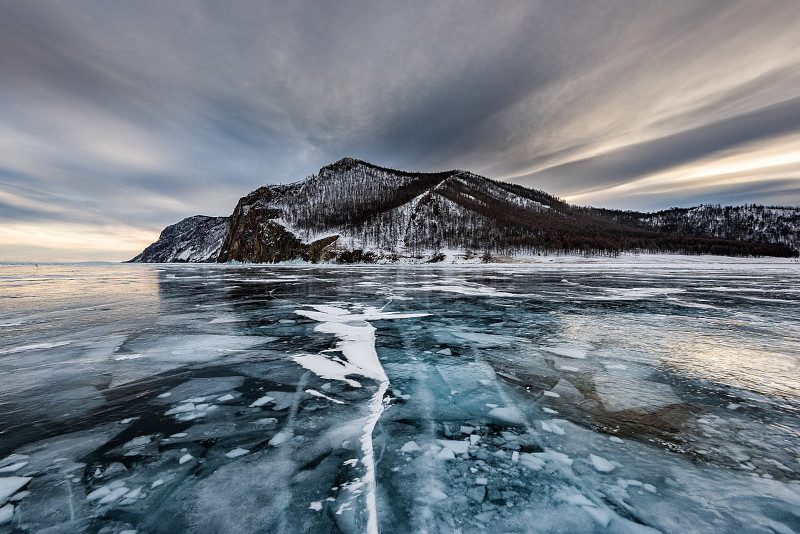

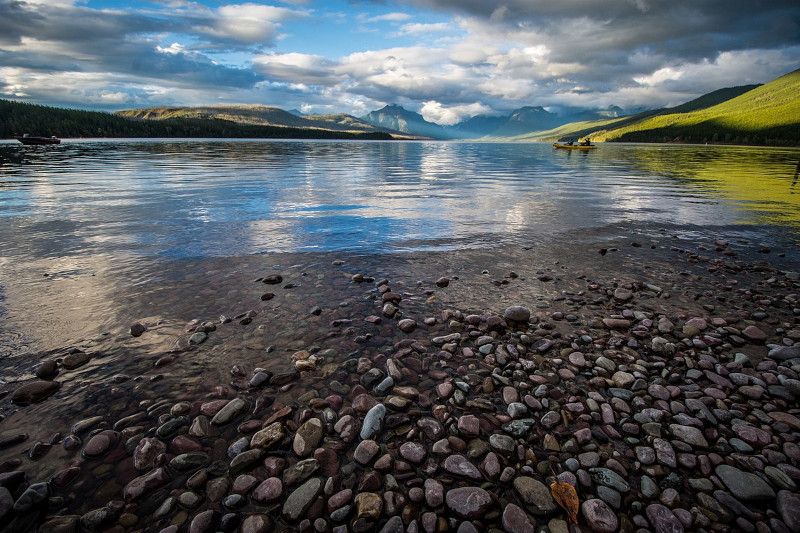
Flathead Lake Physical Description
The stunning Flathead Lake typically captivates those fortunate individuals enough to visit the site. Unlike some similar features located around the world, however, it does so for several reasons. That’s because it’s not merely beautiful, it also boasts highly respectable dimensions.
As a general principle, the wonder of Nature possesses a roughly rectangular shape. Several somewhat elongated protrusions from the main body do exist, though. The body of water additionally displays an extremely irregular outline, greatly increasing its actual amount of shoreline.
In length, the amazing body of water measures approximately 30 mi (48 km). Its overall width, however, equals roughly 16 mi (26 km). These particular statistics provide it with a notably impressive surface area. This aspect of the visual marvel stands at about 197 sq mi (510 sq km).
Yet, the impressiveness of gorgeous Flathead Lake doesn’t simply end there. That’s true since the spectacle also holds yet other surprising aspects. That pertains to its depth. Its maximum known depth reaches 370.7 ft (113 m). The average level also stands out, at about 164.7 ft (50.2 m).
Nature still isn’t finished with this amazing location, though. Situated within its watery confines, a total of a dozen small islands also exist. Combined, these islets contain a total surface area of 5.5 sq mi (14 sq km). The largest, named Wild Horse Island, comprises 3.4 sq mi (8.8 sq km) of this total.

Flathead Lake Location, Formation, and Ecology
The eye-catching beauty of Flathead Lake formed in a broader region of the world already renowned for its extreme abundance of geological wonders. In fact, that area likely won’t surprise many people. That’s because the lake lies within the boundaries of the continent of North America.
Inside of those confines, however, Nature created it well inside the borders of the United States. Its general placement further puts it within the northwest limits of the state of Montana. The organization of the country also places the state itself in the western part of the nation.
Much like many similar features found across the globe, this attention-grabbing lake formed due to glacial activity during the last ice age. Estimates therefore place the creation of the base in which the water now sits at roughly somewhere between the period of 12,800 – 11,550 years in the past.
Multiple geologic events subsequently created the site as it exists today. As the original glacier receded, a moderate portion remained in the region longer than others, due to the local landscape. The melting of that portion of the ice sheet eventually served as the origin of the present lake.
Like many bodies of water of its size, gorgeous Flathead Lake fully serves as the base of a flourishing ecosystem. In itself, it serves as home to a wide variety of life. This includes numerous native fish species, such as the bull trout. Due to stocking activities, other, non-native fish also appear.
Yet, the list of species it supports continues. Numerous insects make their home there, as well. Many species of mammals, such as the river otter, also make use of it, both for drinking purposes and for food. Several varieties of birds additionally depend on it for part of their survival.
Features Sharing Its Region
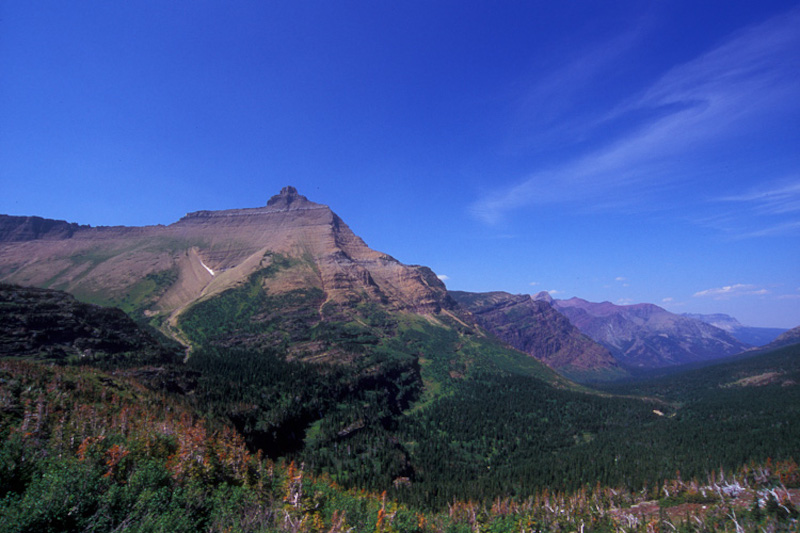

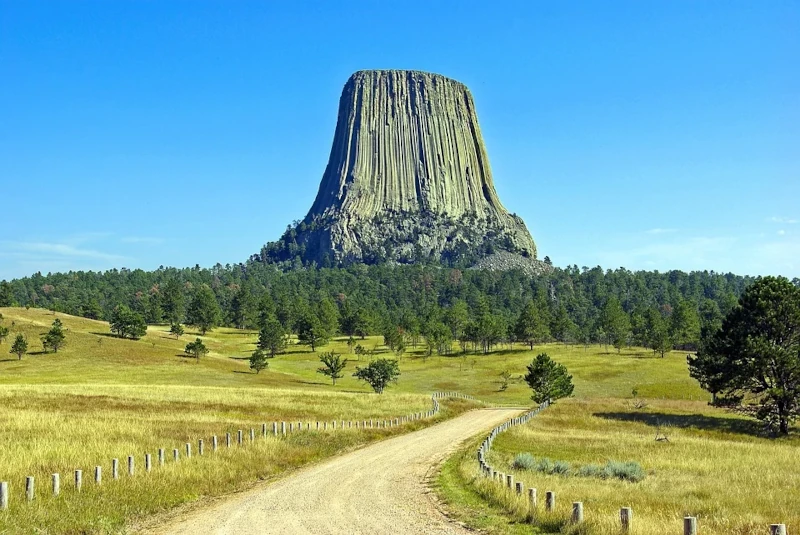
Check out our other aticles on 7 Intriguing South Carolina Insects, Africa’s Many Geological Masterpieces, 4 Magnificent Birds of Mexico, Wonderful Wild Cats of the World









Leave a Reply